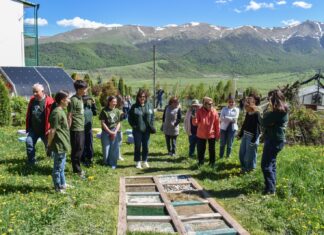WATERTOWN — Miqayel Voskanyan has been drawing more and more attention to Armenian tar music in recent years on an international level. He is a composer and singer as well as an instrumentalist, and recently was in Boston to participate in Silkroad’s Global Musician Workshop of the New England Conservatory. He is the leader of the five-man Mikayel Voskanyan and Friends Band and the smaller Tarup Trio.

What Is a Tar?
Voskanyan explained that the tar is an Iranian stringed instrument in origin but there are actually two types, Iranian and Armenian. He said, “The differences are huge between the Armenian and Persian tars. I can mention some of these differences, like shape, wood, the number of strings, the technique — because Iranians play the tar like a guitar, while Armenians hug the tar — and the sound.”

For Voskanyan, the sitar sounds more like the Armenian tar than the Iranian one. He said, “The sound of the Armenian tar is more wooden, while the Iranian one sounds more metallic.” The Afghani rubab, he added, also sounds more like the Armenian one than the Iranian.
The Iranians have their own repertoire of classical music, different from what Armenians play. Armenians, he said, use it for a greater variety of music, including folk and traditional music, as well as an orchestral instrument, performing music composed for concerts with orchestras. The Armenians have played the tar since at least medieval times, if not earlier, Voskanyan said, and this is borne out by references in medieval manuscripts and sculptures, including khachkars (cross stones).

In Soviet times, Voskanyan said the tar became called the Caucasian tar because it was also performed in neighboring countries, including Georgia. However, Voskanyan said that in that country, it was the Armenian minstrels who played the instrument, not native Georgians.























